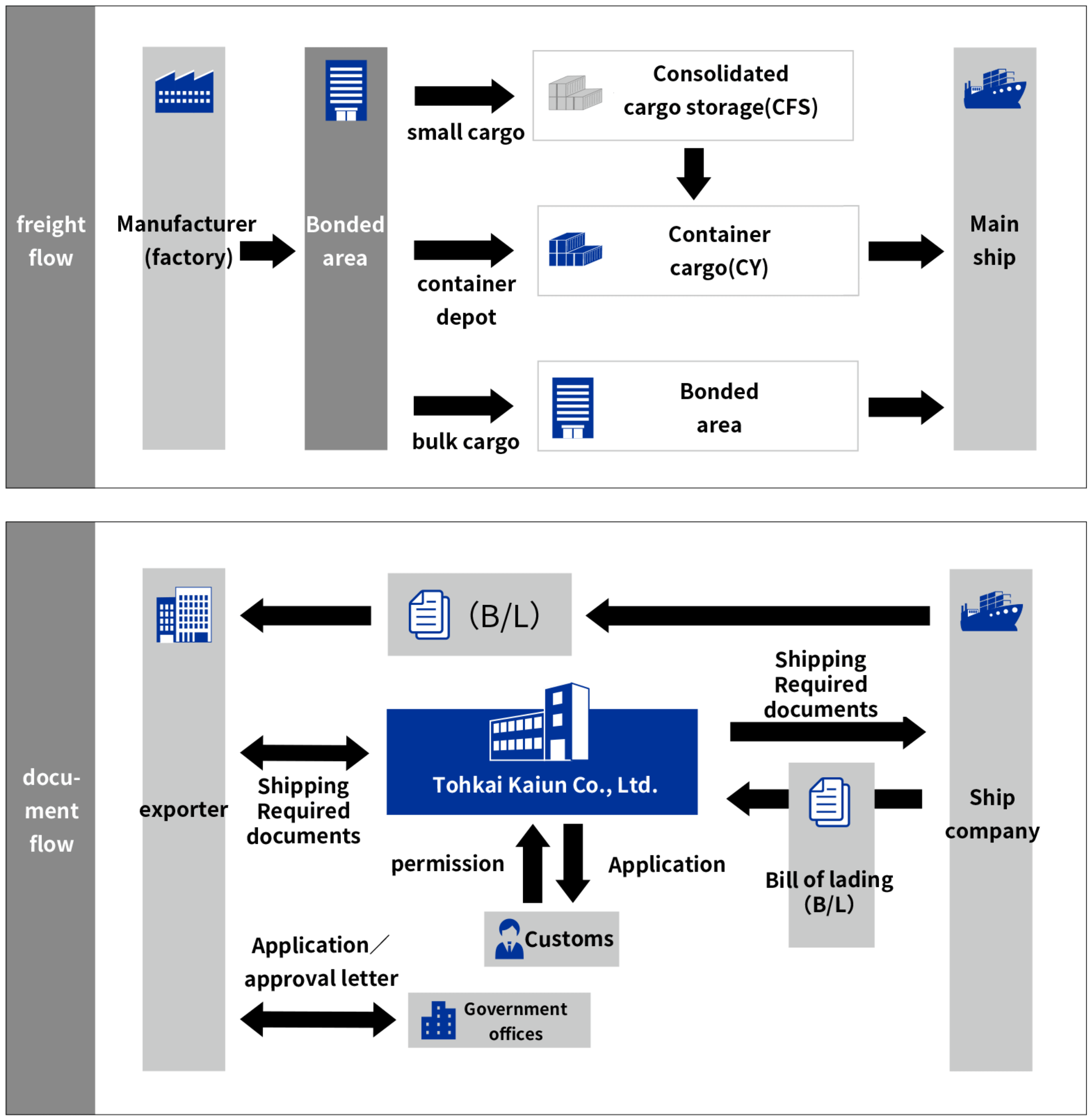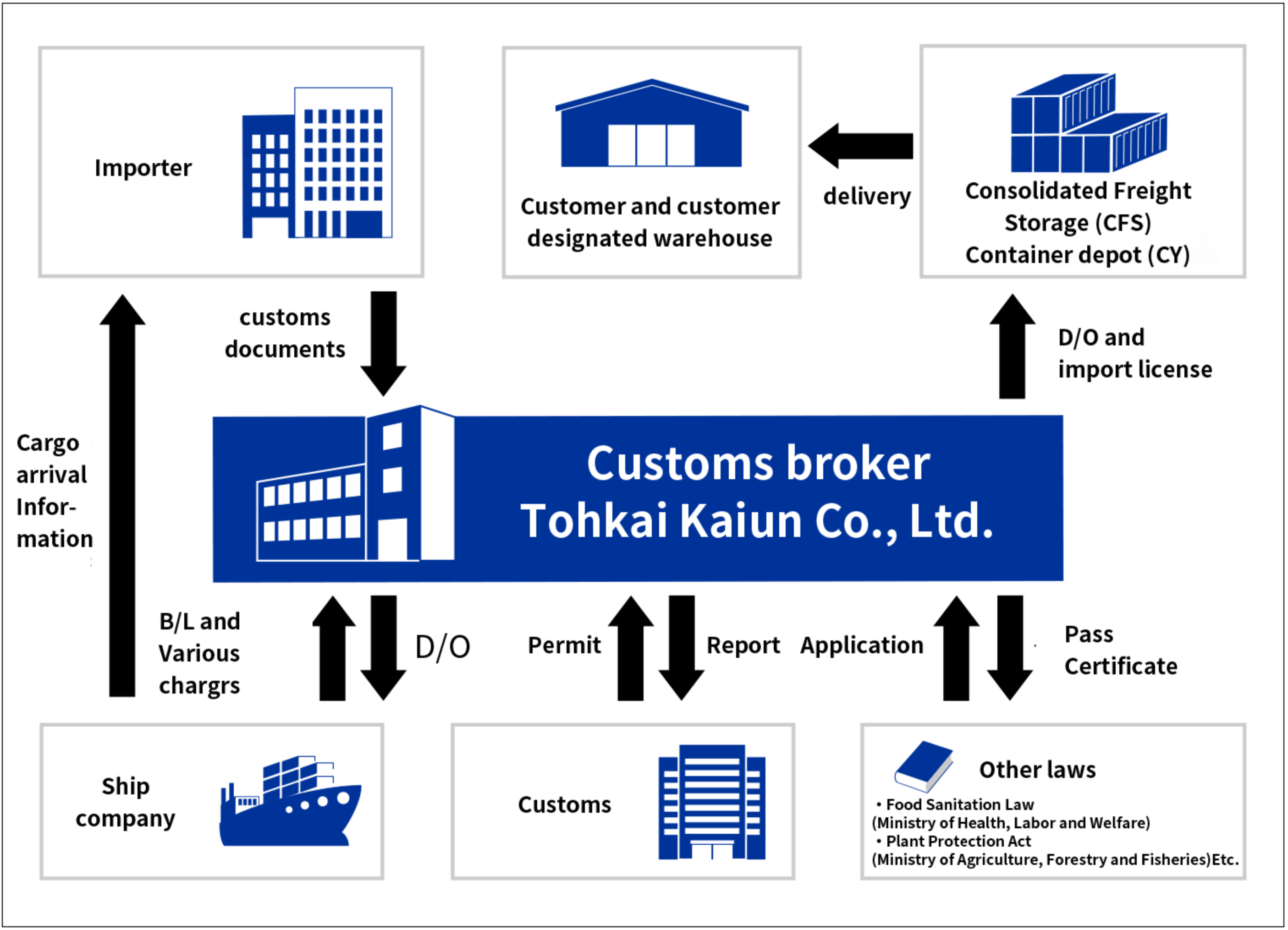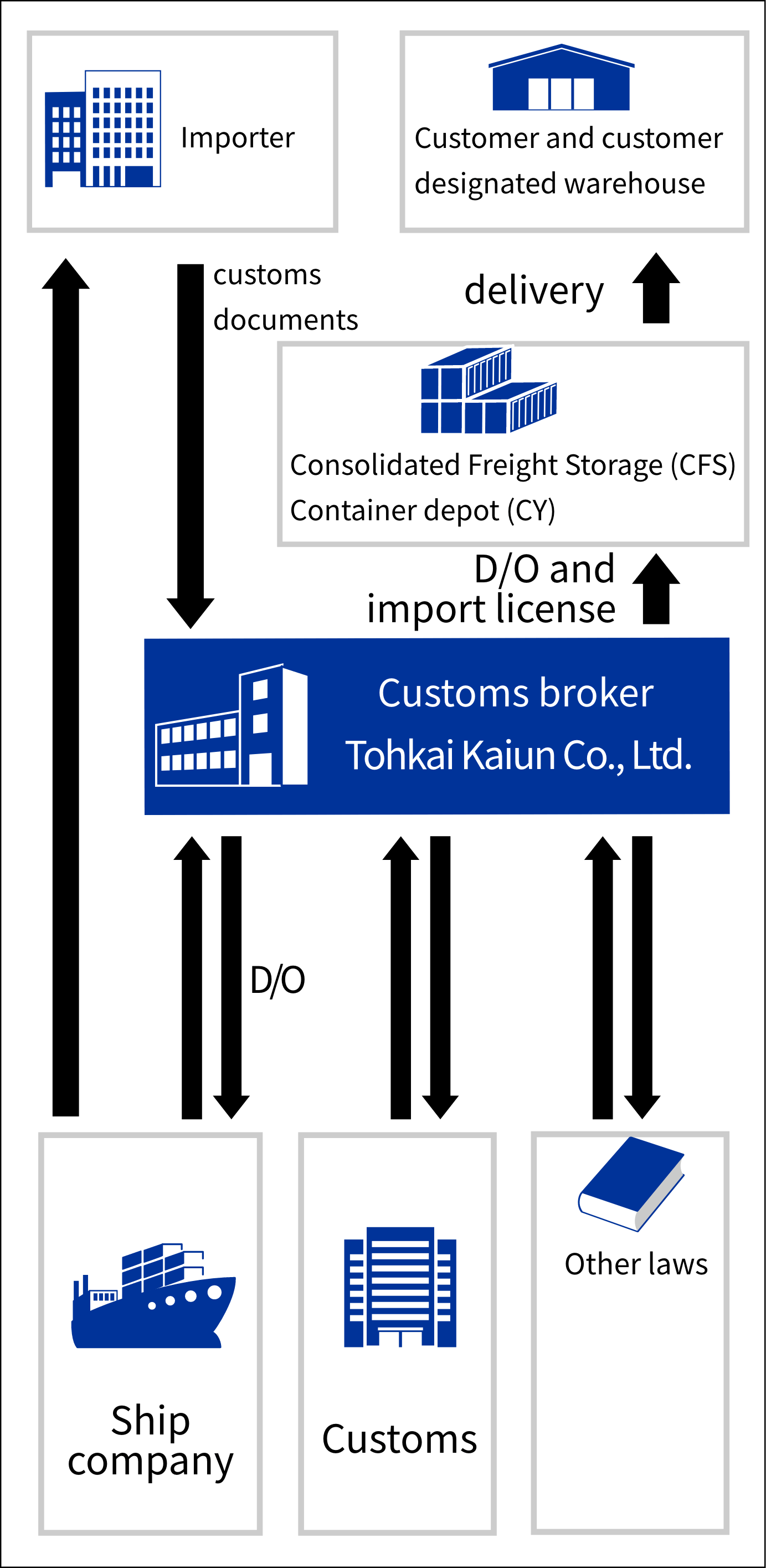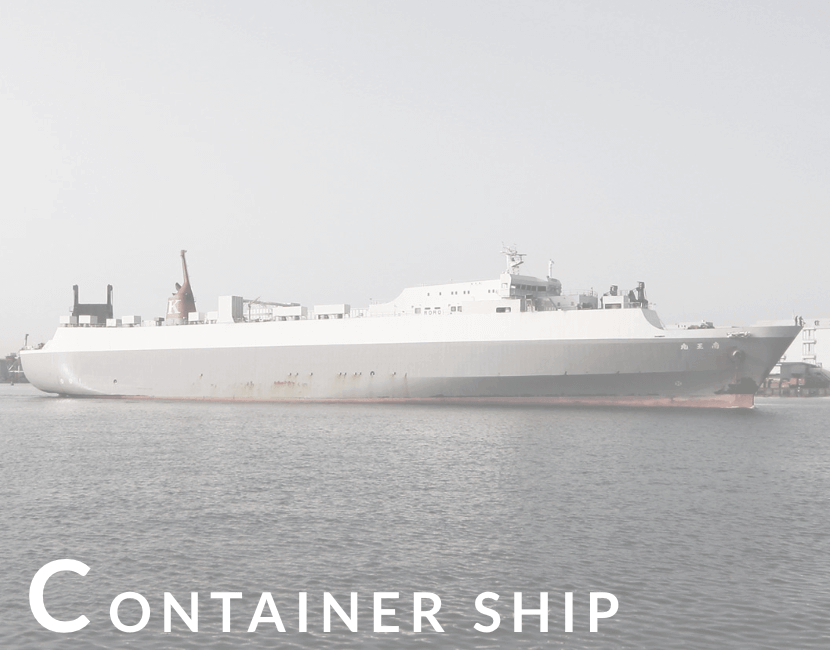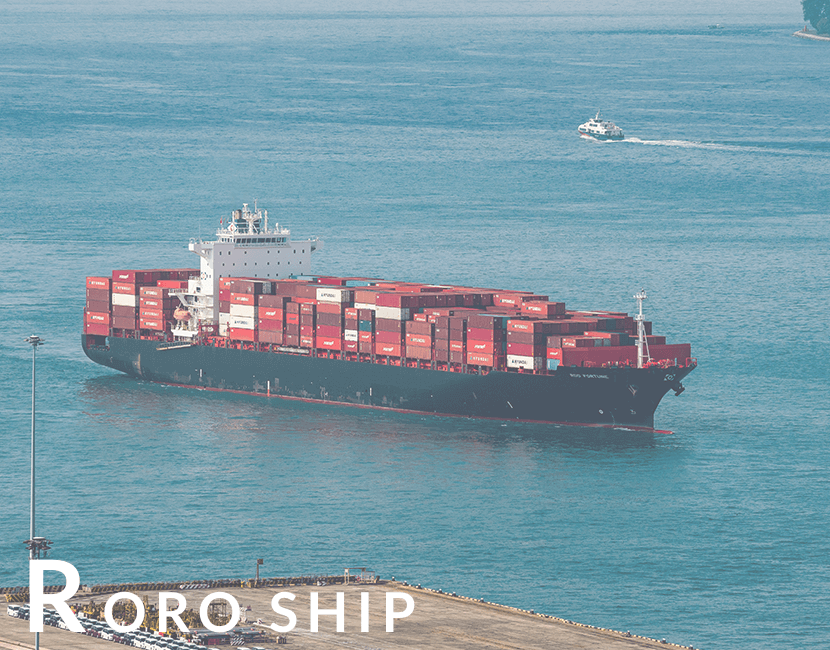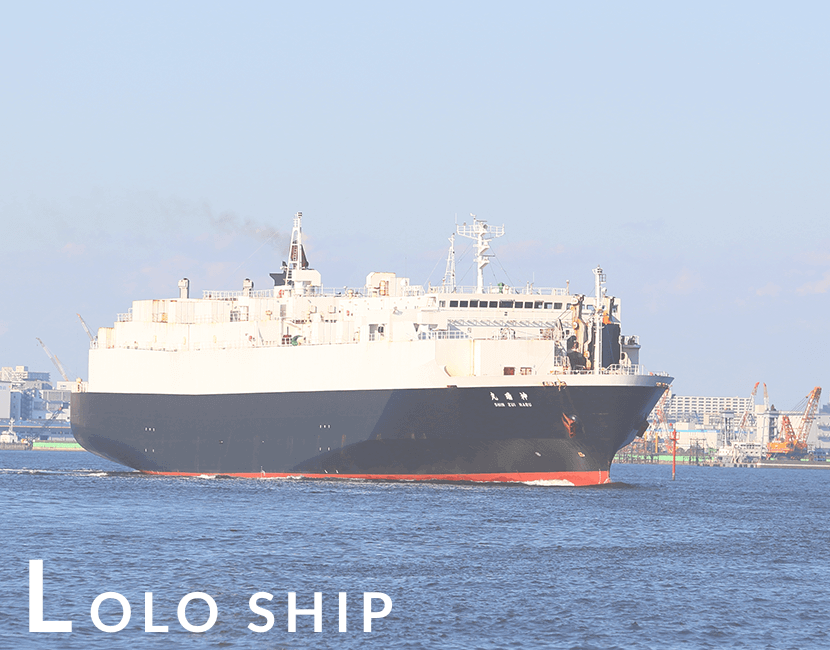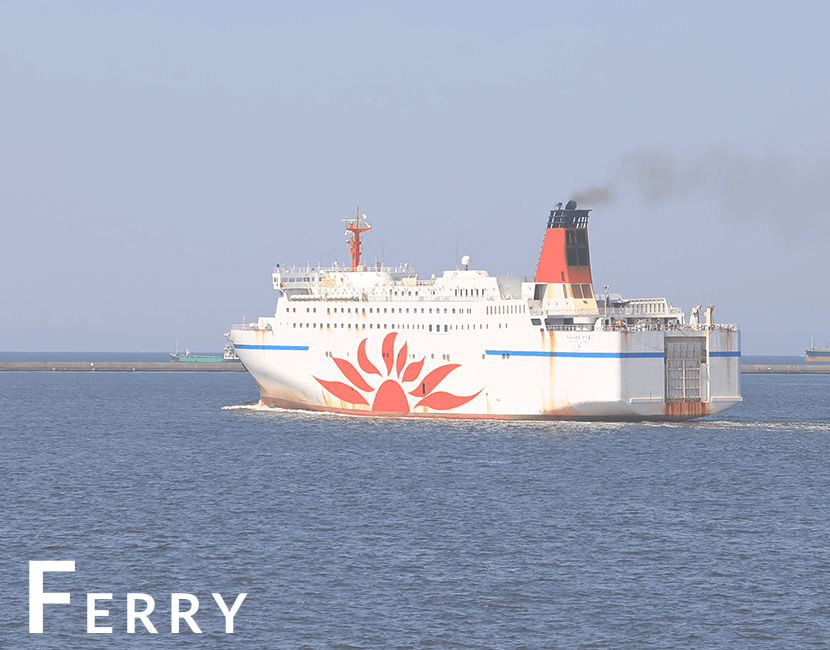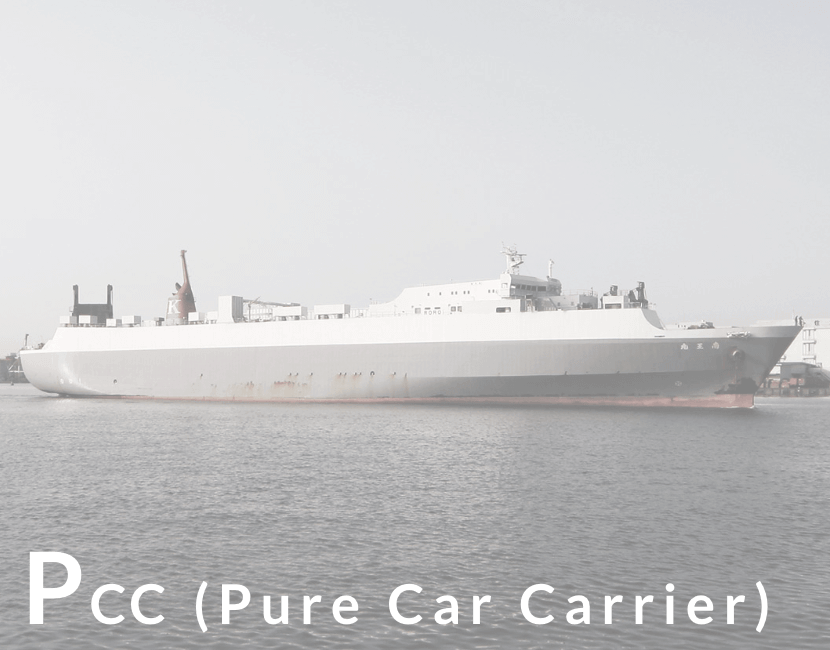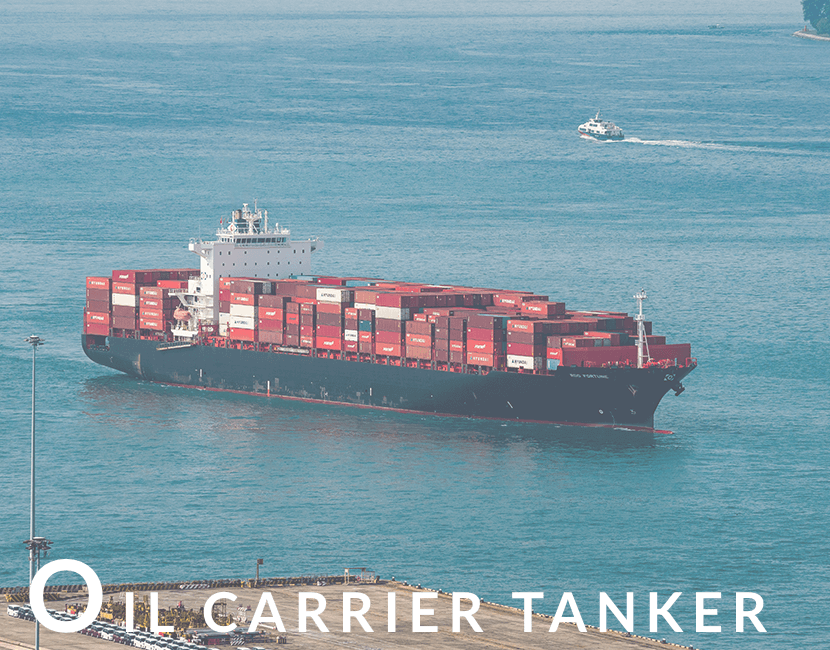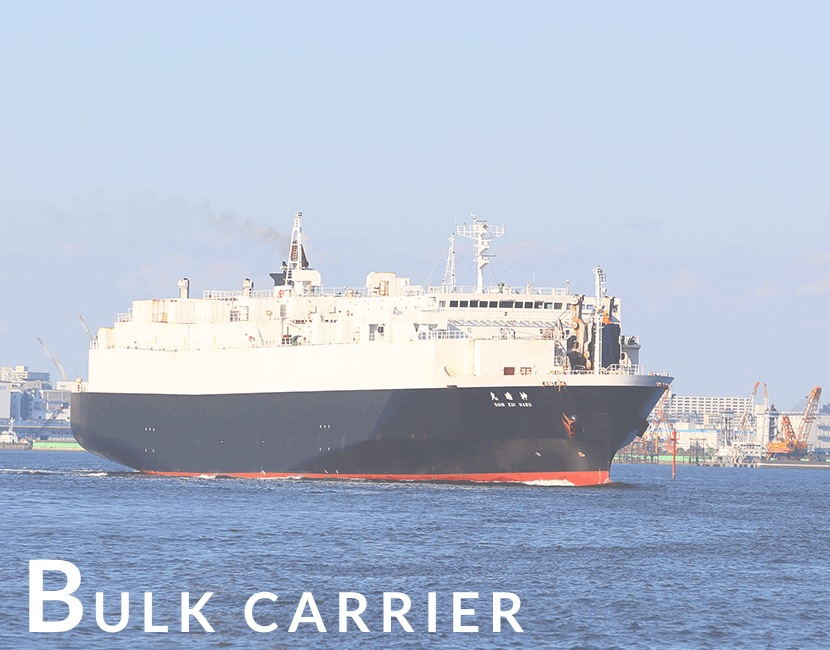EXPORT AND
IMPORT
輸出入の基本情報
EXPORT AND IMPORT
FLOW OF IMPORT
AND EXPORT 輸出入の流れ
輸出入の流れ
For exports, domestic cargo is generally brought into a bonded area in advance, and an export declaration must be made to the customs office with jurisdiction over that area.
Export declaration procedures involve attaching the prescribed export application form that states the name of the cargo, its quantity, volume, price, and other important matters, as well as purchase orders and any other necessary documents. Permission or approval for cargo that requires advance approval prior to export under any law other than customs laws must be obtained in advance and submitted to customs when making an export declaration.
To accept cargo that has been loaded into a bonded area you must make an import declaration to the customs office with jurisdiction over the bonded area where the cargo is being stored and have undergo the prescribed screenings and inspections; then, if tariffs or consumptions taxes are required, these must be paid to obtain an import permit.
Import declaration procedures involve attaching the prescribed import application form that states the name of the cargo, its quantity, volume, price, and other important matters, as well as purchase orders and any other necessary documents. For cargo that requires special permits or approval under laws other than customs laws, obtaining the permit or approval prescribed by the law prior to making an import declaration to customs is required.
NECESSARY DOCUMENTS 輸出・輸入に必要な書類
輸出・輸入に必要な書類
Documents Required For Export
- INVOICE
- PACKING LIST
- Maritime Cargo Arrival Notice
- Maritime Insurance Statement
Documents Required For Import
CARGO SHIP TYPE 貨物船種類
貨物船種類
CONTANER SHIP
A cargo ship carrying containers loaded with cargo. We have two kinds of cargo ships: full container ships, which are freighters that carry only containers, and semi-container ships that carry both containers and general cargo.
RORO SHIP
These containerships use a cargo handling method in which forklifts or trailers are boarded directly onto the ship to load and unload containers (horizontal cargo handling). In the same way as car carriers and ferries, there is a passage called a rampway on the ship that is lowered to the jetty when performing cargo handling work.
LOLO SHIP
This is a container ship that employs cranes or other equipment to lift containers onto RORO ships (vertical cargo handling method).
FERRY
One kind of cargo vessel used in marine transport, also known as a passenger ferry or car ferry. Trailers loaded with trucks and containers can be wheeled on board, making cargo handling easy.
PCC (Pure Car Carrier)
A PCC is a ship that exclusively carries cars. In the past, cars were hung by cranes and loaded on conventional ships to be transported overseas, but now Japanese cars are transported around the world using ships exclusively made for vehicles.
OIL CARRIER TANKER
A cargo ship with equipment for cargo handling and transport of liquid flammables such as crude oil or fuel. Pipes extending from the bottom of the tank connect and from the top of the tank on land are connected to pipes in the tanker when loading and unloading cargo.
BULK CARRIER
These ships are specially equipped to load grain, ore, and other cargo in powder form without packaging. They are sent to silos on land through a vacuum.
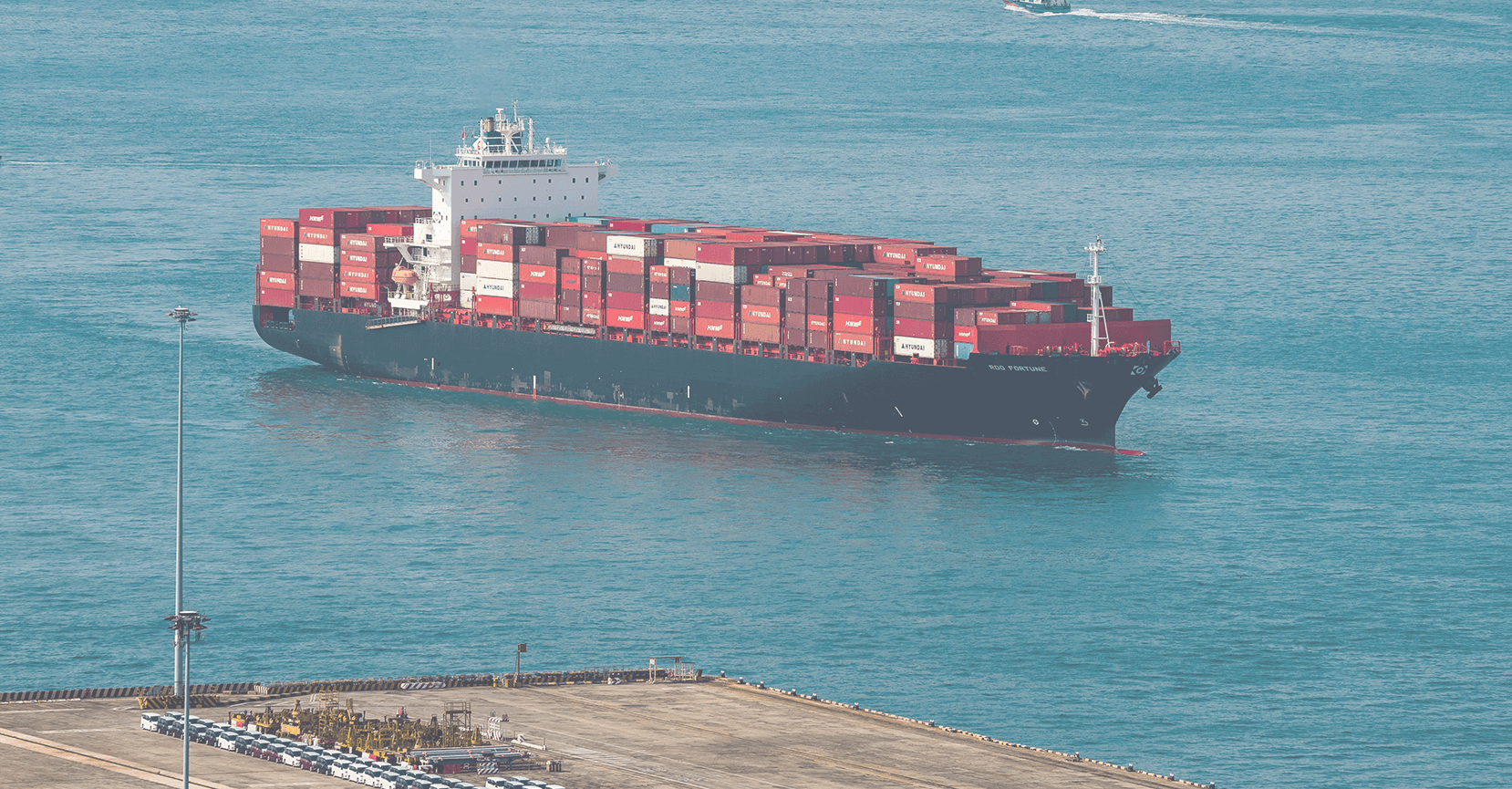
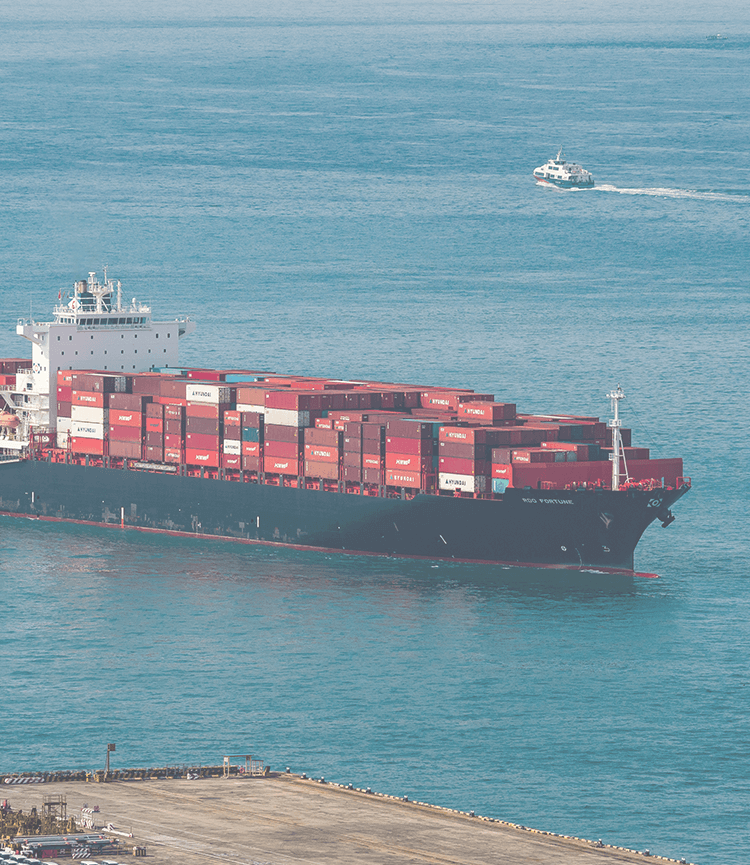
Conventional ships use cranes to lift cargo and load it onto the ship. While there are fewer ships nowadays they still sail all over the world.
The big advantage over specialized ships is that they can carry just about everything, from general sundries to heavyweight items, long items, plant cargo, and scraps.
Feel free to contact us here for consultations and inquiries
Contact Us



